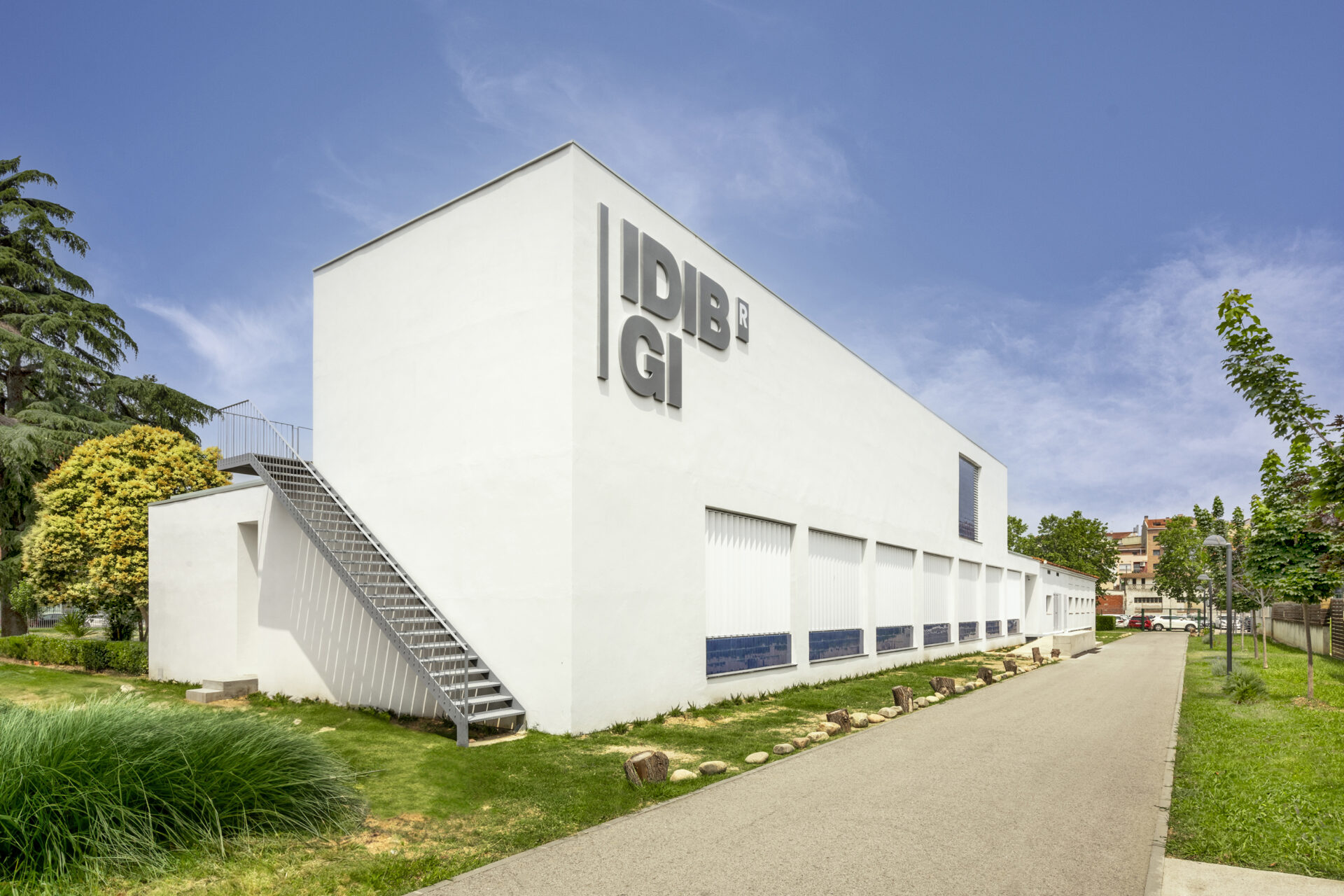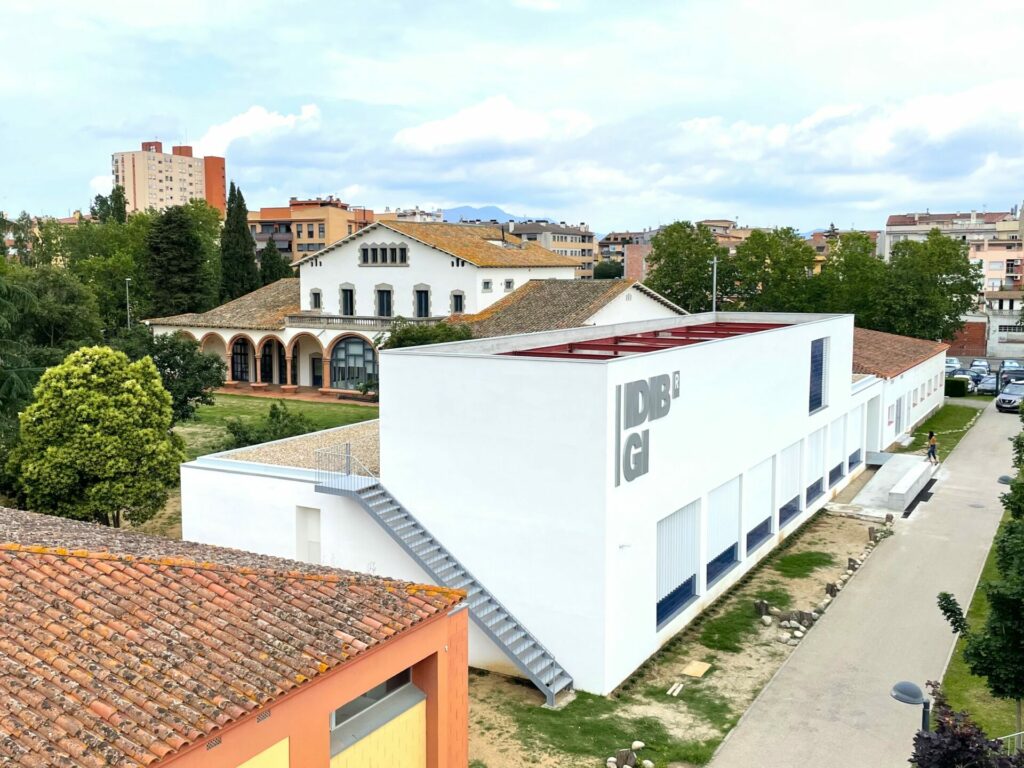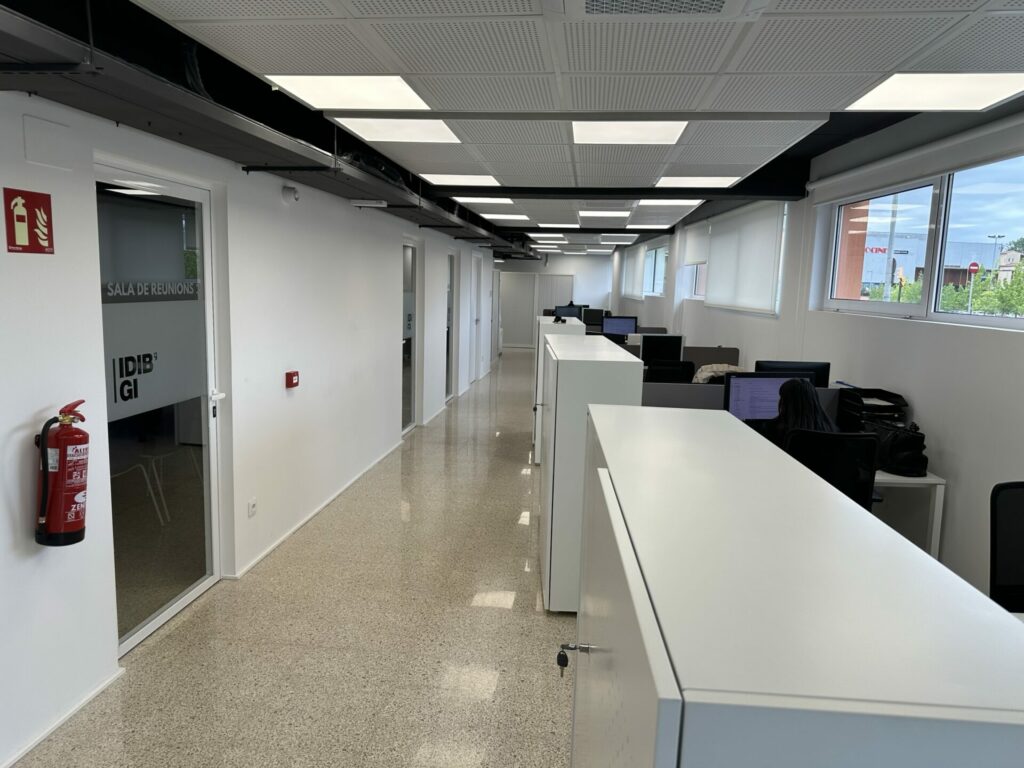
The Girona Biomedical Research Institute (IDIBGI) now has new spaces dedicated to research in operation thanks to expansion work, both at its headquarters in Salt and at new premises in Girona, located in the Sant Ponç neighbourhood. This work has been carried out through two different projects that have provided IDIBGI with new research facilities in response to the needs and growth of the centre's research groups.
Today, the director of IDIBGI, Marga Nadal, the manager, Anna Ribas, and the laboratory manager, Ester Quintana, presented the new IDIBGI facilities to the media as part of Science Week 2023.
"An investment for the future"
The IDIBGI building at the Martí i Julià Hospital Park in Salt has been enlarged by almost 500 square metres, significantly increasing the space available for research and the growing research community. Specifically, a second annex wing has been added, adding 485 m2 to the 1,757 m2 of floor space that the building already had.
"This extension is a strategic investment in the future for IDIBGI, with a view to the future Girona Health Campus next to the Martí i Julià Hospital Park. Proximity to hospitals is essential for the integration of healthcare and biomedical research," explains IDIBGI director Marga Nadal.
"The refurbishment project has been designed to accommodate IDIBGI's present and future needs: the new building has multi-purpose rooms that, if necessary and when the time comes, could be converted into laboratories. In addition, this new wing is prepared for the construction of up to two floors," explains IDIBGI's manager, Anna Ribas.
New developments in the laboratories of the Salt Hospital Park A new laboratory area has been set up in the M2 building with capacity for more researchers and a specific room for the Medical Imaging research group, which until now had no place in the M2 building. Another new development is the creation of a specific laboratory for research with Immersive Virtual Reality. This room has been designed for the Mental Health and Addictions research group of the IDIBGI and the Mental Health and Addictions Network of the IAS, in a project that studies the emotional regulation of patients with different diseases using this innovative technology. Initially, the room has been equipped with equipment loaned by the Fràter association of Girona. Other research groups will also be able to use it if they need it.


Thanks to the works, the IDIBGI has also set up a new bacteria room and a primary culture room. This is an area set up for research with cell cultures that are extracted directly from a person's sample, such as blood or skin. The extension has also allowed for the renovation and optimisation of the installation of the nitrogen tanks, which are necessary for storing and preserving the cells used for research at IDIBGI, and which will allow the storage capacity to be increased in the future.
In the room where the nitrogen was until now, a new piece of equipment has been installed which is essential for biomedical research: the ultracentrifuge, a centrifuge capable of spinning at very high speeds, and which makes it possible to separate the components of a solution according to their size and density (parts of cells, fragments of cells, or others) or to isolate the elements that are of most interest. This is the first ultracentrifuge available for research in the Girona area.
In order to set up all these research spaces, the research support offices have been moved to the new wing, where new meeting rooms and common areas have also been built. Work on the extension of the M2 building began in May 2022 and was completed in June, and it has been progressively equipped until last October. In total, the works on the M2 building and its equipment have cost around 1.8 million euros (excluding VAT), and have been made possible thanks to a grant from the Department of Research and Universities of the Generalitat de Catalunya in the framework of the call for Singular Projects, and a grant from the Diputació de Girona (Girona Provincial Council). The rest has been financed with funds left over from the institution. Salt Town Council has also subsidised 95% of the building permit.

New IDIBGI premises in Sant Ponç
A year ago, work was completed on the new IDIBGI premises in the Sant Ponç neighbourhood, very close to the Dr. Josep Trueta Hospital in Girona, a project carried out between April and October 2022. These premises house part of the research staff that until now was located at the Hospital.
Most of them are staff from several research groups that need to be close to the Hospital, such as the Nutrition, Eumetabolism and Health group, the Respiratory group and the Obesity and Cardiovascular Risk in Paediatrics group. This new space also houses a large part of the clinical trials activity that does not need to be located in the hospital itself, as well as the secretariat of the Ethics Committee for Research with Medicines (CEIm). This refurbishment project and its equipment cost 470,000 euros (excluding VAT). For this work, the IDIBGI has also received a contribution from Girona City Council.

IDIBGI's high scientific level is consolidated
This October the IDIBGI reaffirmed the good level of its scientific and institutional activity, after successfully passing the evaluation of the CERCA Institution, which manages the CERCA system of centres of the Generalitat de Catalunya. The CERCA Institution coordinates the periodic evaluation of the research centres that make up the system with the aim of analysing the fulfilment of the mission entrusted to them and their scientific and management level.
An example of this is the scientific activity in 2022, included in the IDIBGI's Scientific Report, which details bibliometric indicators such as the increase in the average impact factor of original scientific articles with authors linked to the IDIBGI, or the increase in the percentage of original articles published in high-impact scientific journals (in 2022, 60% were published in the first quartile). Other examples are IDIBGI's participation in important research, such as the clinical trial of the HIPRA vaccine, or the increase in competitive projects awarded to IDIBGI, which have risen from 29 new projects awarded in 2021 to 62 in 2022.
"We will continue to work in this direction, driven by the good results we are having and with the commitment to promote even more cutting-edge biomedical research, with results that translate into clinical practice and improve the health of the entire population," said Marga Nadal.
Heading photography: Xavi Juanola.